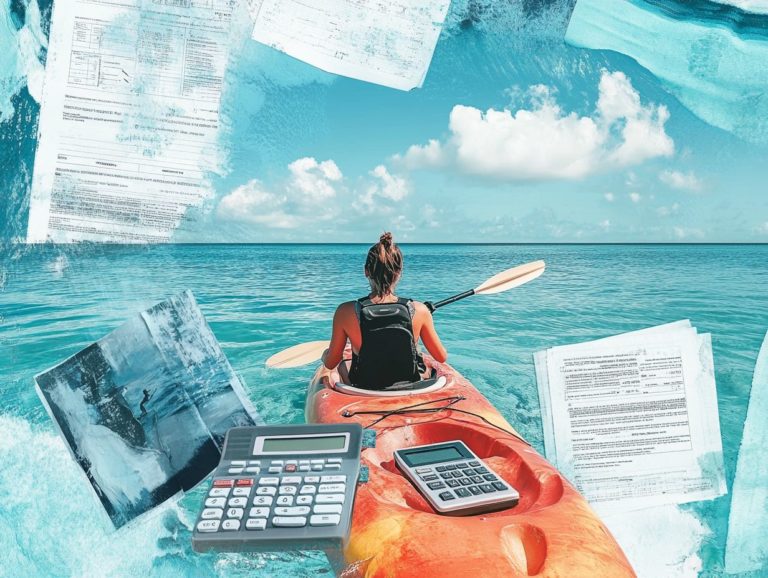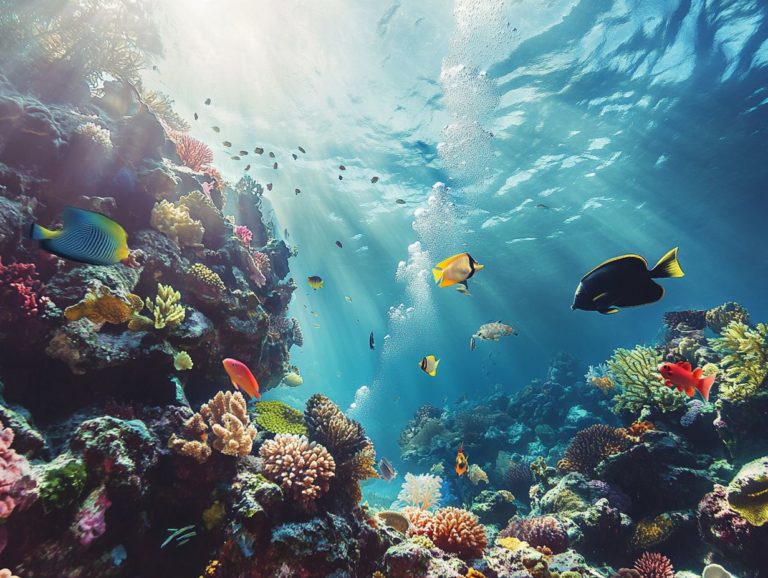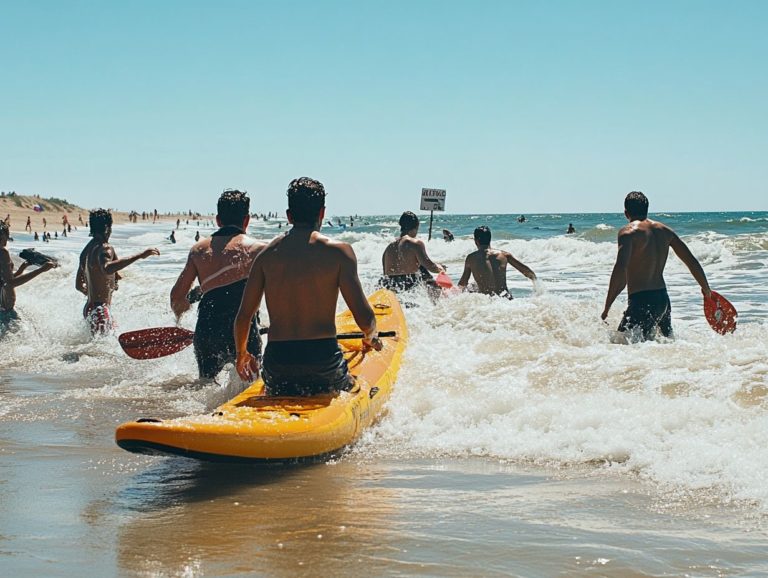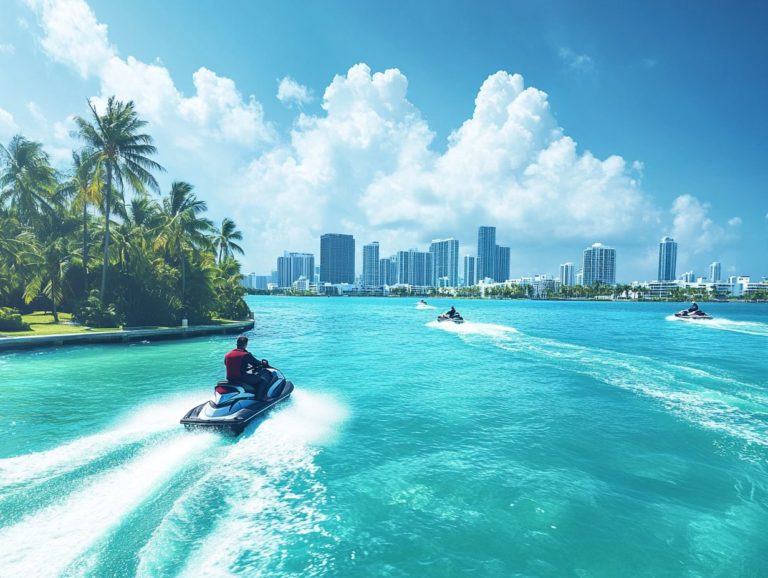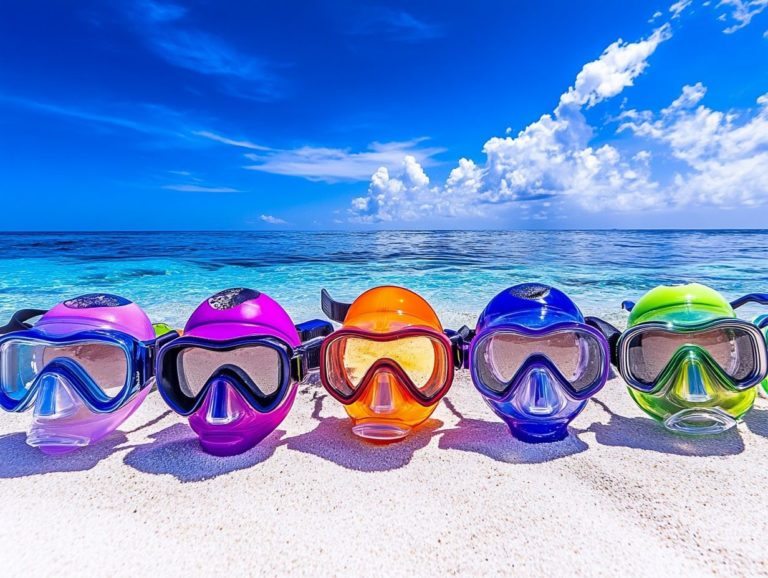What to Know About Water Sports Safety Gear
Water sports are thrilling, but they come with unique risks. Choosing the right safety gear is crucial for a fun and safe experience on the water!
This article covers the essential safety gear you need. It also provides tips for choosing the right equipment and maintaining it.
It shines a light on the common missteps individuals often make when selecting and utilizing their gear. Stay informed and elevate your adventures to be both safe and enjoyable!
Contents
- Key Takeaways:
- Essential Safety Gear for Water Sports
- Choosing the Right Safety Gear
- Taking Care of Your Safety Gear
- Common Mistakes to Avoid
- Frequently Asked Questions
- What to Know About Water Sports Safety Gear?
- What types of water sports require safety gear?
- What are some essential items of water sports safety gear?
- What should I look for in a life jacket?
- Do I need to wear safety gear at all times during water sports?
- How often should I replace my water sports safety gear?
Key Takeaways:
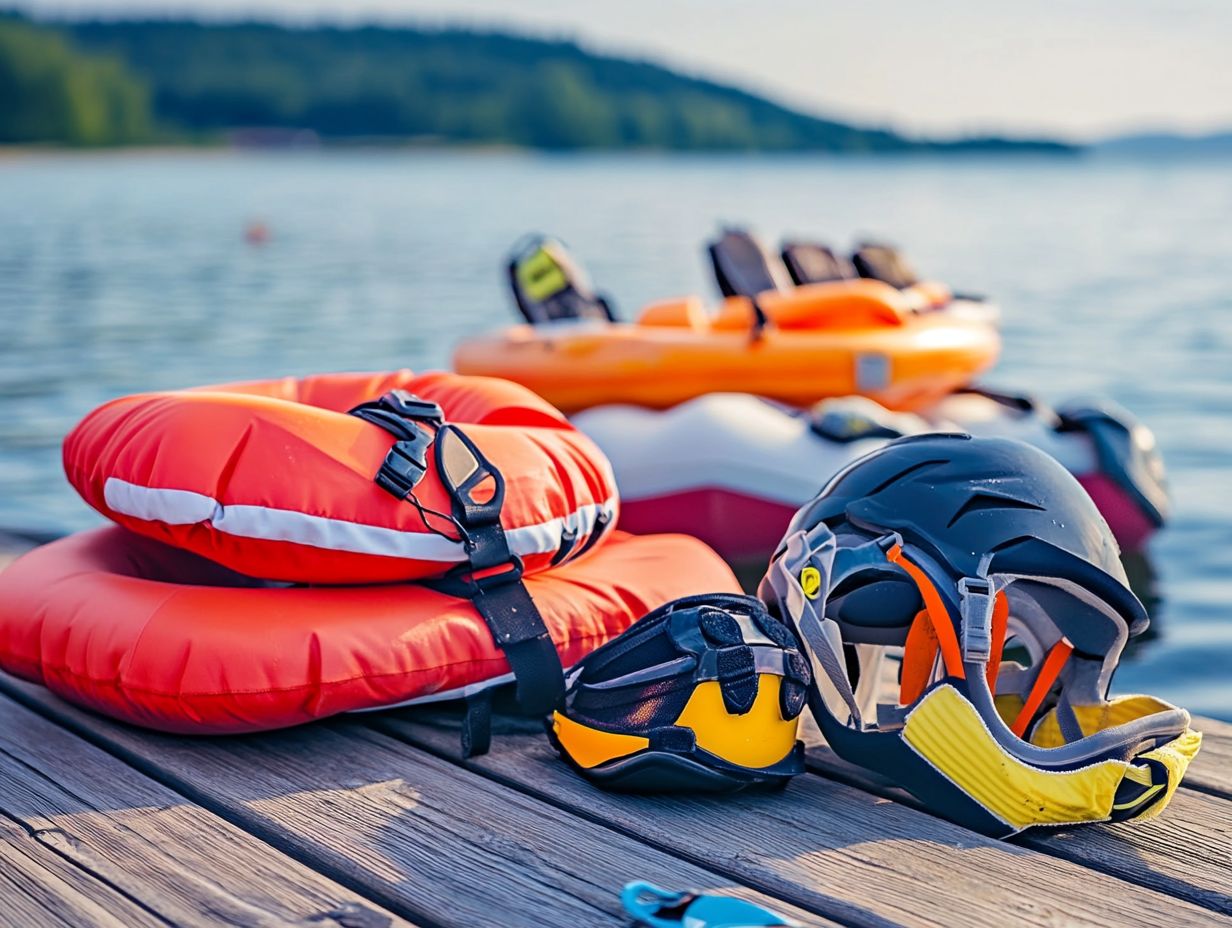
- Proper safety gear is crucial for water sports to prevent injuries and ensure a safe and enjoyable experience.
- Essential safety gear includes a life jacket, helmet, and protective clothing, tailored to the specific water sports being engaged in.
- When choosing safety gear, consider factors such as fit, comfort, and quality. Properly clean and maintain gear to prolong its lifespan and avoid common mistakes.
Why is Safety Gear Important?
Safety gear is absolutely essential for anyone diving into water activities, whether you re boating, fishing, wakesurfing, or kayaking. It plays a pivotal role in ensuring your safety by preventing accidents and injuries.
Each piece of safety gear has a specific purpose, from life jackets that keep you afloat to signaling devices that can be a lifesaver in emergencies. The U.S. Coast Guard serves as a valuable resource for educating water enthusiasts like you on the proper use of equipment. By complying with these guidelines, you significantly reduce the risk of mishaps, allowing you to fully immerse yourself in the thrill of your water adventures.
When you prioritize safety gear, you re not just an adventurer; you become a responsible steward of your environment. You set a shining example for others and help promote safety among your friends and family in aquatic sports.
Essential Safety Gear for Water Sports
Engaging in water sports requires you to equip yourself with essential safety gear to guarantee a secure experience. This includes everything from life jackets and personal flotation devices (PFDs) to fire extinguishers and medical kits.
This gear complies with U.S. Coast Guard boating regulations and enhances your preparedness for any unexpected situations that may arise. Effective emergency communication, such as using visual distress signals and keeping your cellphone handy, can provide an additional layer of safety for you and your community while you enjoy activities like paddleboarding, snorkeling, and fishing.
Types of Gear and Their Uses
The range of safety gear available for water sports empowers you to tackle emergencies with confidence. Equip yourself with life jackets, PFDs, and medical kits they’re essential for staying safe.
Beyond these basics, consider how heavy-duty flashlights can illuminate your path during evening excursions, while robust protective eyewear shields your eyes from harmful UV rays and debris. If you’re venturing into activities like snorkeling, a wetsuit provides both warmth and protection. For kayakers, using bilge pumps to remove excess water is vital, helping to maintain stability and buoyancy.
For those wakesurfing, wearing a helmet is a non-negotiable step in protecting against impacts. Emergency communication tools like two-way radios and flares are invaluable for handling unexpected situations, significantly enhancing safety during your water sports adventures.
Choosing the Right Safety Gear
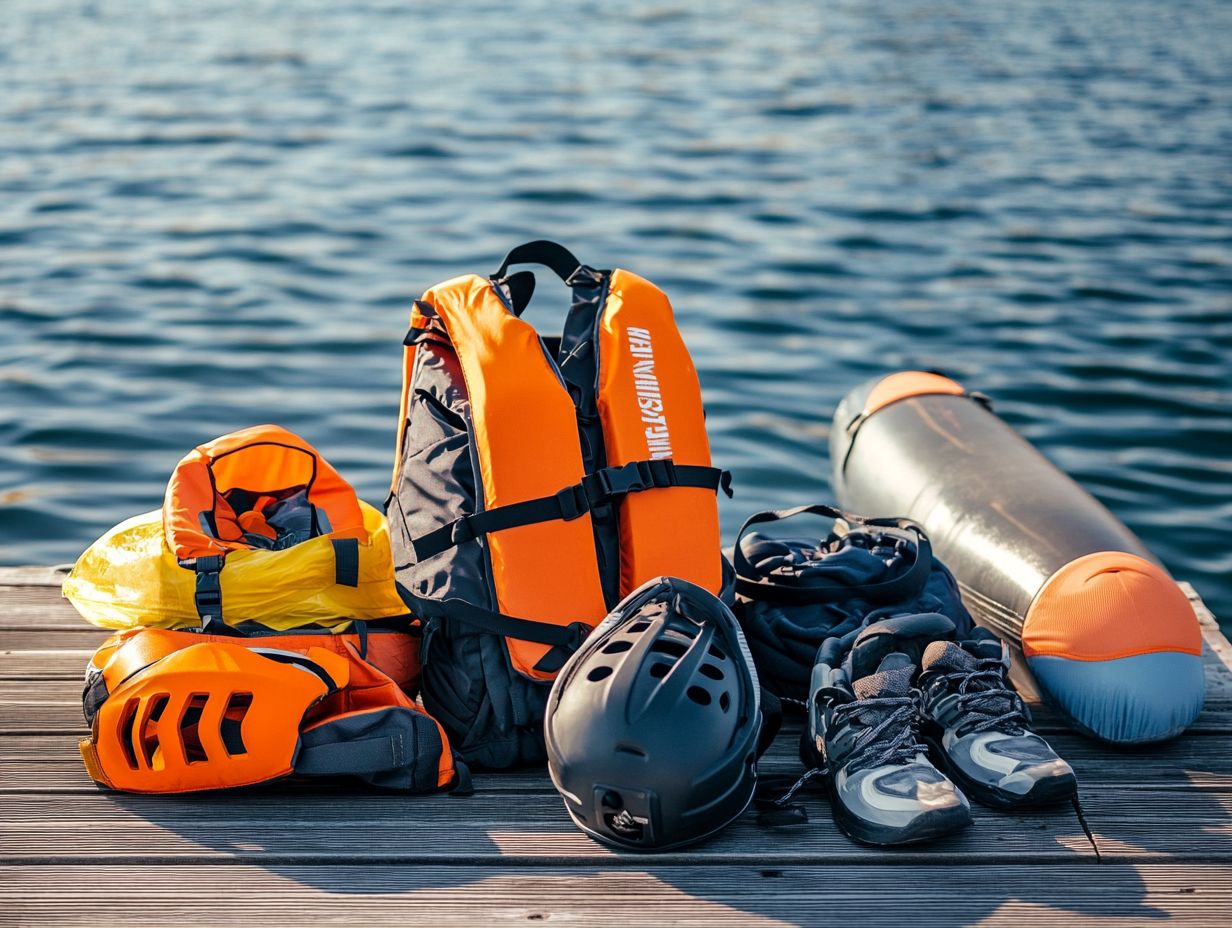
Selecting the right safety gear is essential for anyone venturing into water sports. You need to consider several factors, including water conditions and boating regulations, to ensure both legal compliance and personal safety.
Choosing a suitable personal flotation device (a device that helps you stay afloat in water) or life jacket that fits the specific watercraft you re using can greatly diminish the risks associated with accidents and injuries.
Think about the type of water sports you plan to engage in be it fishing, paddleboarding, or wakesurfing. This will help you select the most appropriate equipment for your adventure, including factors like swimming skills.
Factors to Consider
When selecting safety gear for water sports, consider several key factors. These include the type of personal flotation device, the prevailing water conditions, and the need for regular gear checks.
Staying up-to-date with weather updates and environmental conditions can significantly impact the suitability of your gear, enhancing your safety during activities like kayaking, surfing, and fishing. Engaging with community support and local expertise can assist you in making informed choices about safety equipment.
It’s critical to understand local wildlife and potential hazards in the water, as these can greatly affect your safety. A well-informed water sports enthusiast recognizes that elements such as water temperature, currents, and tides are essential in determining the right gear for the day, including what to look for in a water sports life jacket.
Engaging with fellow enthusiasts can be incredibly beneficial. They can share valuable experiences and insights, fostering a supportive community. By checking local weather updates and connecting with seasoned individuals in the field, you can ensure a safer and more enjoyable experience on the water.
Taking Care of Your Safety Gear
Proper maintenance and care for your safety gear, such as life jackets and personal flotation devices, are essential for ensuring their effectiveness during water sports. This is especially important when it comes to emergency preparedness.
Regular cleaning and inspections not only extend the lifespan of your safety equipment but also significantly reduce the risks of accidents, contributing to overall community safety.
By following recommended maintenance practices, you can engage confidently in activities like fishing, wakesurfing, and paddleboarding, secure in the knowledge that your gear is fully reliable.
Cleaning and Maintenance Tips
Cleaning and maintaining your safety gear, including life jackets and fire extinguishers, is crucial for ensuring the longevity and effectiveness of the equipment you rely on for water sports. Regular inspections and proper cleaning techniques enhance performance and provide you with peace of mind while engaging in activities like kayaking, snorkeling, and fishing.
Develop a routine that includes thorough cleaning after each use. This is especially important after exposure to saltwater or chlorine, which can deteriorate materials over time. Check for wear and tear, like frayed straps or rusted components, to catch potential hazards early.
Equipment such as helmets and wetsuits deserves special attention. A gentle scrub with mild soap and air drying ensures they maintain their structural integrity.
Diligent maintenance guarantees that your safety gear performs well and reassures you that you’re prepared for unexpected situations, including emergencies that may arise while boating or participating in other water sports.
Don t wait! Check your gear today for a safer experience on the water!
Common Mistakes to Avoid
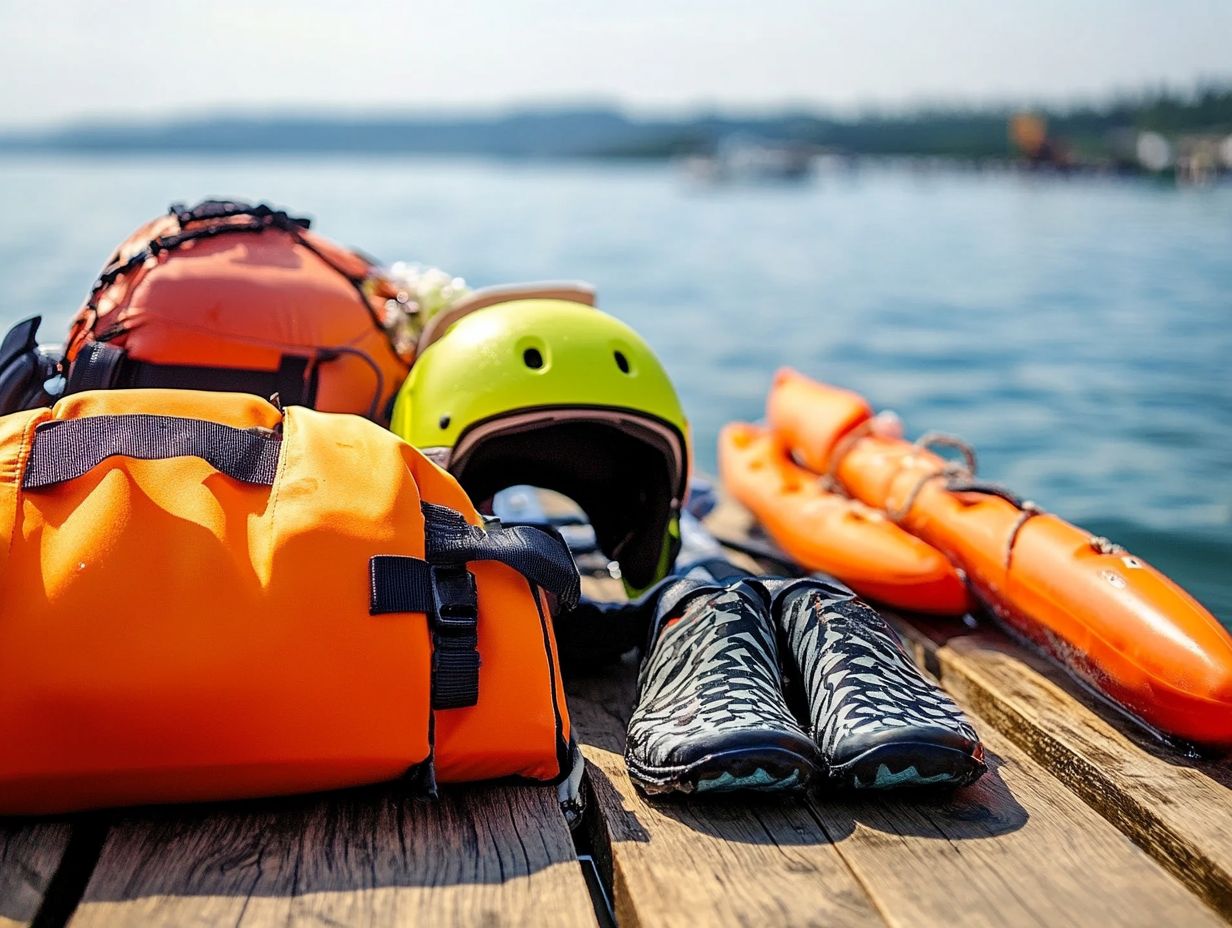
Avoid common mistakes when selecting safety gear. This is vital for preventing accidents during water sports.
Many individuals underestimate the significance of legal compliance and equipment maintenance. Choosing the right life jacket for your specific activities and water conditions is crucial for your safety.
Neglecting regular inspections and disregarding local boating regulations can lead to serious repercussions for you and the wider community.
Errors in Gear Selection and Usage
Errors in gear selection can lead to severe accidents, particularly in water sports that require specific safety equipment like life jackets. Many overlook the importance of selecting the right gear and understanding the need for regular maintenance.
Not knowing the capabilities and limitations of various gear can result in hazardous situations. For instance, using a life jacket that isn t rated for the specific water conditions can lead to drowning, even for experienced swimmers.
Learning about your gear could save your life! Training sessions on gear selection and safety are a must. Familiarize yourself with best practices, such as:
- Always checking your gear before use
- Understanding how to wear it properly
- Ensuring everyone in your group is equipped and aware of safety measures
Engaging in continuous learning builds your confidence and promotes a safer environment for everyone involved in water activities.
Frequently Asked Questions
What to Know About Water Sports Safety Gear?
Water sports are a fun and exciting way to enjoy the outdoors, but it’s important to stay safe. Here are key things to know about water sports safety gear.
What types of water sports require safety gear?
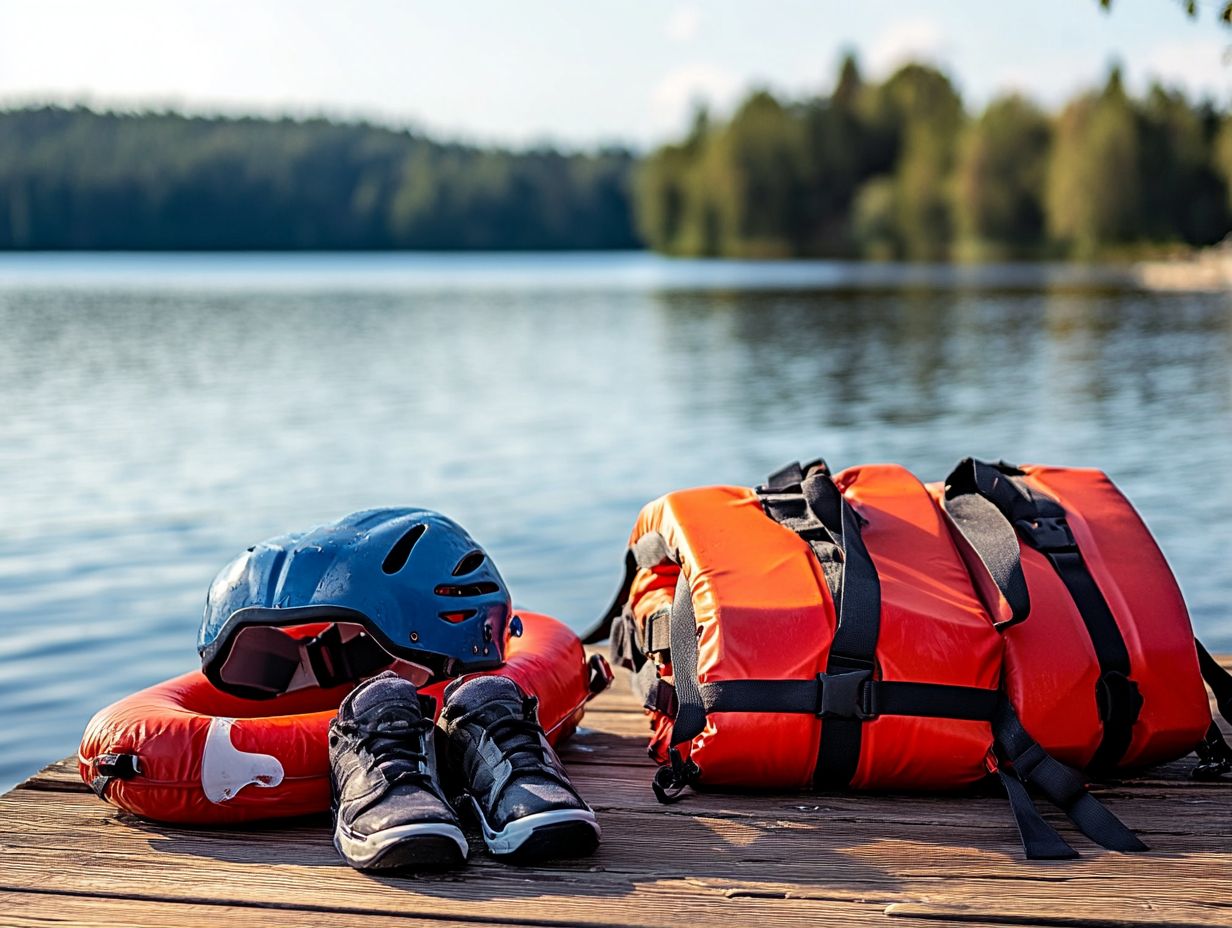
Any activity involving being on or in the water, such as swimming, boating, surfing, or kayaking, requires safety gear to help prevent accidents.
What are some essential items of water sports safety gear?
The most important piece of safety gear is a life jacket. Other essential items include a helmet for kayaking and a wetsuit for cold water sports.
What should I look for in a life jacket?
When choosing a life jacket, ensure it is the appropriate size and type for your body and water sport. It should be Coast Guard approved and in good condition with no rips or tears.
Do I need to wear safety gear at all times during water sports?
Yes, it is crucial to wear safety gear at all times during water sports, even if you are a strong swimmer. Accidents can happen quickly, and safety gear can help prevent serious injuries or save your life.
How often should I replace my water sports safety gear?
Replace safety gear if it becomes worn, damaged, or no longer fits properly. Regularly check your gear for signs of wear and tear to ensure optimal protection.
Don t wait! Check your safety gear now to ensure you’re ready for your next adventure!

